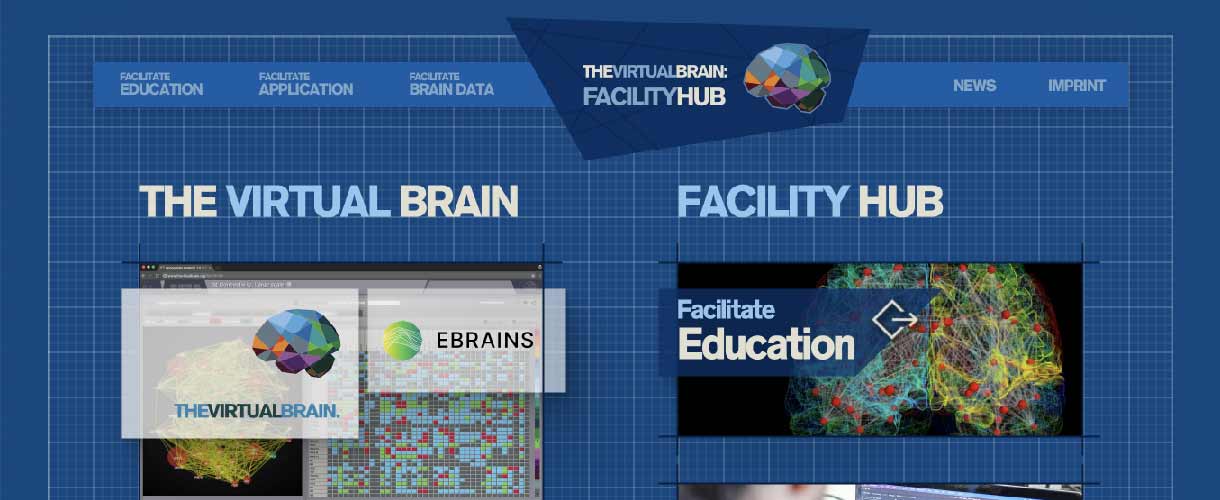On the quiet Saturday morning of January 6th, 2018, an eager scientist tapped the trackpad – unknowingly making history and quite a few people dance on tables, toasting with leftover champagne from New Year's eve: Because the 10,000th copy of The Virtual Brain was downloaded!
The story of this impressive achievement in modern neuroscience started 10 years ago, in a pub in Chicago where Viktor and Randy had more than one beer in the afterglow of an OHBM meeting – and a crazy idea: Running a scientifically useful, even individualized human brain simulator on arbitrary laptops and yet be scalable to HPC clusters.
Today, The Virtual Brain (TVB) has become an internationally acclaimed, open source neuroscience software platform, available for free on Windows, Mac and Linux. Every day, a sizable global community of active researchers are using TVB to analyze, understand and help treat diseases like Epilepsy, Stroke and Alzheimer's Disease.
TVB's user base is growing by more than 6,000 per year and the scientific groundwork has been cited in close to 100 peer-reviewed publications. Large research facilities at Charité in Berlin, AMU in Marseille and Baycrest in Toronto have constructed and simulated hundreds of individual, Connectome-based brain network models and published their findings. Well over 10 million CPU core hours went into TVB simulations, running on average MacBooks, faculty Linux servers and supercomputers like JURECA in Jülich. Starting this year, the French Epinov project will use TVB to guide surgical strategies in 10 clinics by modeling the individual brains of 400 epilepsy patients.
What enabled the success of TVB is its singular focus on delivering practical results for novel clinical applications – not in 10 years but today, on every PC and Mac. It's the only software that can generate brain imaging signals for any person, and even in animal models, reasonably fast and with scalable fidelity.
While large-scale research initiatives have been trying to simulate neurons and small brain regions at the cellular level on massively parallel hardware, they are years away from clinical applications. TVB, however, accelerates this process and reduces complexity on the micro level to attain the macro organization: A TVB model of a patient's brain generates sufficiently accurate EEG, MEG, BOLD and SEEG signals despite the complexity of a micrometer of neuronal tissue, which is reduced by a factor of a million through methods known from statistics. The key is to keep the geometry of the brain's shape and its folds precise on a millimeter level.
This smart reduction of complexity has earned TVB worldwide recognition as demonstrated by invitations to participate at neuroinformatics events such as INCF conferences, and workshops dedicated to High Performance Computing (HPC) (such as organized by NSG). TVB is used as a reference tool for use of HPC resources in the neuroscience community and directly links to other large-scale neuroinformatics efforts such as the Allen Institute’s Mouse atlas or the Human Brain Project (HBP).
TVB members disseminate their know-how, e.g. through international TVB Node workshops, by mentoring students in the Google Summer of Code program and supporting code contributors via GitHub. Also, the public at large can experience TVB technology in a playful way at the MyVirtualDream events and the upcoming Brainmodes smartphone app.
Over the past 10 years and 10,000 downloads, TVB has evolved from a few haphazard equations scribbled on a bar coaster to a revolutionary platform for computational brain modeling. During this time, the TVB team has received around $20 million in generous funding, largely carried by the James S. McDonnell Foundation.
Up to 25 people made the TVB team in some phases, working hard to realize the vision of founding scientists Viktor, Randy and Petra. Major kudos goes to Jochen and Lia who hammered out the software architecture in multiple "code jams", Michael who gave TVB a brand identity and UI, and the steady hand from Tanya steering the group through many showcases at the Society for Neuroscience and the Node workshop series.
It's been an epic journey and we're all proud to start this new year on a high note! I guess we're excused to enjoy a cold beer now – for science, you know!
Download the TVB@10000 illustration and spread the word!







